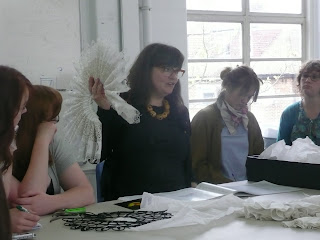

Photo of the WAC Bennett Dam, 2nd photo before the dam was built.
This comment which was posted on facebook a couple of weeks ago,sparked off a heated debate after I commented in favour of the North American Natives.
So...having a background in electrical power generation I have somewhat of an insight into the different types of generation facilities. I am not 100% in favor of the proposed 'Site C' project. But my real beef is this, how can the First Nations Groups (Treaty 8)stand and be so vocal and opposed but at the same time be involved in 'negotiations' with BC Hydro? The answer is simple...Greed! Mother Earth comes second
The debate went along the lines of Natives get everything for nothing it's our land too, why don't we get the same basicly. Some comments where lets say not pleasant. But in light of this debate it's made me curious about the hydro vs native issues of BC.
First Nations People were never allowed to stand and ensure that their concerns, environmental or otherwise, were ever considered.
Negotiating with BC Hydro for a monetary gain is one thing...in today’s economic world it is good business, in every sense of the word. However, this is not some small development that will go un-noticed. The past / current practise of building Earthen Hydro-Electric dams incurs environmental damage that is on a scale of epic proportions. Look at the first dam built on the Peace River, WAC Bennett, this is not something that we can simply return to a natural state. It’s gone forever, well until the next ice age at least.
The Peace River dam was originally conceived half a century ago by the British Columbia Electric Company (now BC Hydro), under the direction of Dal Grauer. B.C. Electric obtained the necessary permits and land titles to proceed with the project, completed the design and made preparations for work to begin on site in 1963. However, the assets of that private electric utility company were expropriated by the Provincial Government just as construction of the Peace River hydroelectric dam was about to commence. Several of the top executives of the old firm left the new B.C. Hydro and construction proceeded under new management.
The finished project was brought online in the late 1960's and has provided British Columbia, and in particular the Lower Mainland and the City of Vancouver, with electricity ever since. The reservoir, once filled, flooded the Finlay and Peace River valleys and became the largest man-made lake on the planet. This flooding was not without consequence, however, to the people who had been living in those valleys.
At the time, the Peace River project was one of the largest developments of its kind in the world. It provided thousands of jobs during construction and facilitated rapid industrial growth throughout British Columbia over the next forty years. The flooding of the Finlay and Peace river valleys was a tragedy for the aboriginal inhabitants of the reservoir valleys.
The Tsay Keh Dene, formerly known as the Ingenika band, comprising some 125 families, were moved from their traditional village site, where they supported themselves by hunting and trapping, to what were supposed to be model reserves a couple of hundred kilometres south near the booming mill town of Mackenzie. The entire band received a total compensation of $35,000.
The move was a disaster for the Tsay Keh Dene, many of whom spoke no English. Over the next couple of years, they drifted away. Many came back to Ingenika Point, a low bluff overlooking the water that covered their traditional home. That was where they were living 20 years later, when they were rediscovered by government officials, living in conditions that Social Credit Intergovernmental Affairs Minister Stephen Rogers called "the most primitive I've ever seen." A great many of them wound up living on the streets of Prince George and Vancouver, and, of those, many did not live long. The Tsay Keh Dene received additional compensation from the Province in the autumn of 2006.
In October 2008, the Kwadacha First Nation reached a settlement with the BC government and BC Hydro over damages suffered during construction and operation of the dam and Williston Reservoir. The settlement includes a $15 million lump-sum payment and annual payments of $1.6 million adjusted for inflation.
The energy industry, regardless of its source, helps create and support, essentially, every other facet of our lives. There is a need for growth in the supply of electrical energy, to feed the demands that our ever multiplying population requires. We are a tender little species and our comfort zone must be maintained. But at what cost? When you consider the sources of the materials used and the environmental impact of the industries that develop and create the required equipment to harness and utilize energy, there really isn’t such a thing as clean energy.
Hey, on another tangent here, why not support the building of a huge multi Gigawatt Nuclear plant? PEACE RIVER NUCLEAR POWER, hey it’s got a ring to it and it would cost almost as much. Ok it might not last as long as Site C, but neither will I. Or how about a Natural Gas fired generating station, these are so small in comparison to both geographical size and environmental ‘footprint’. Yet, the power output of a large generating station could match that of the Site C project (~900MW).






















































